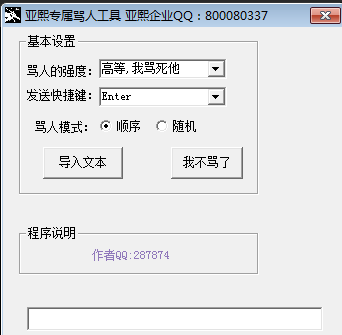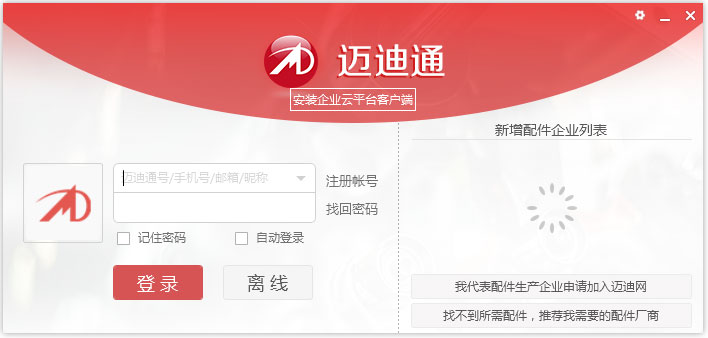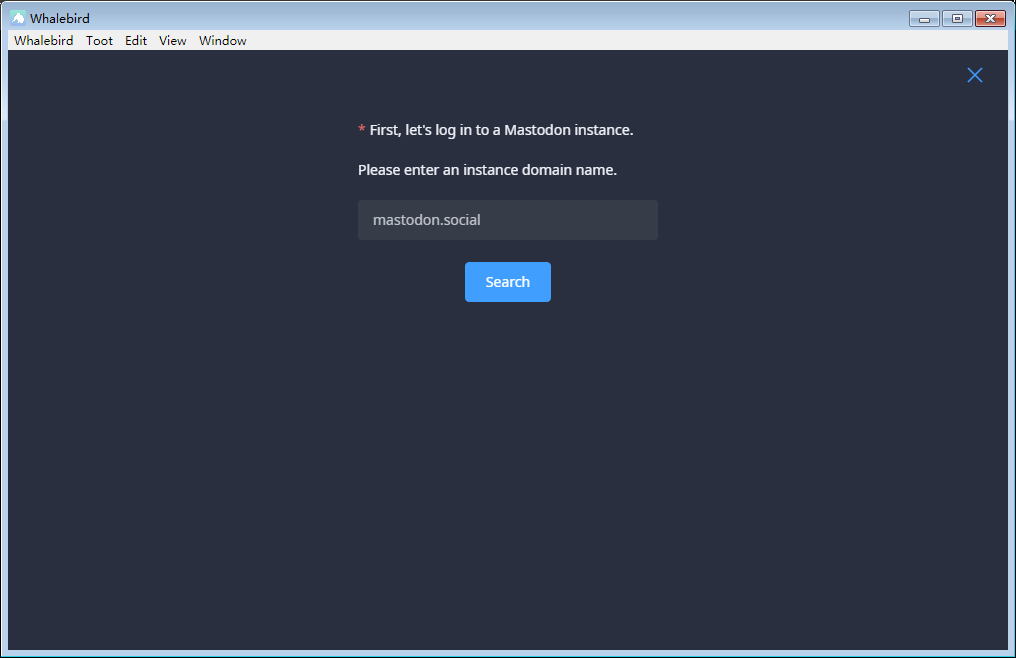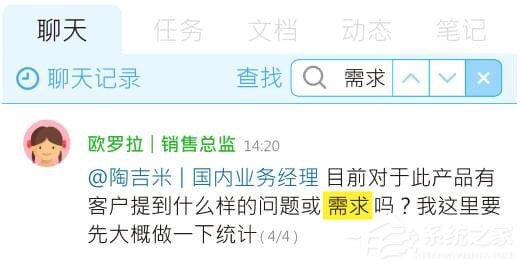9. PD逆向工程--由数据库转为模型(ER图)
时间:2022-03-14 01:57
步骤:
1、 在控制面板-->管理工具(如果没找到管理工具,查看方式改为大图标)-->数据源(ODBC)-->用户DSN -->用户数据源下添加一个数据源(这里根据情况添加数据源)
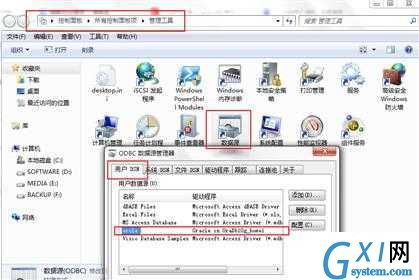
图中orcle就是添加的数据源,这里因为我的数据库所在数据源是orcle的.
2、 打开PowerDesigner新建PDM模型如图:
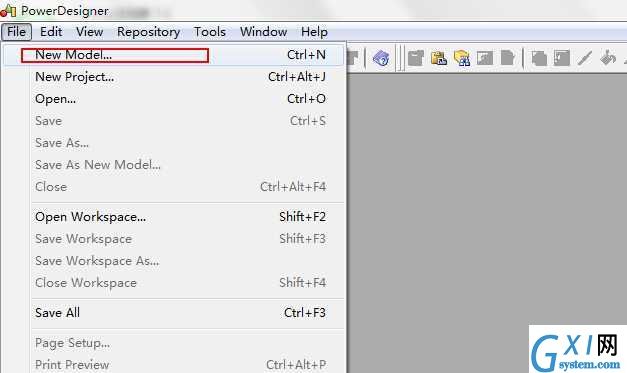
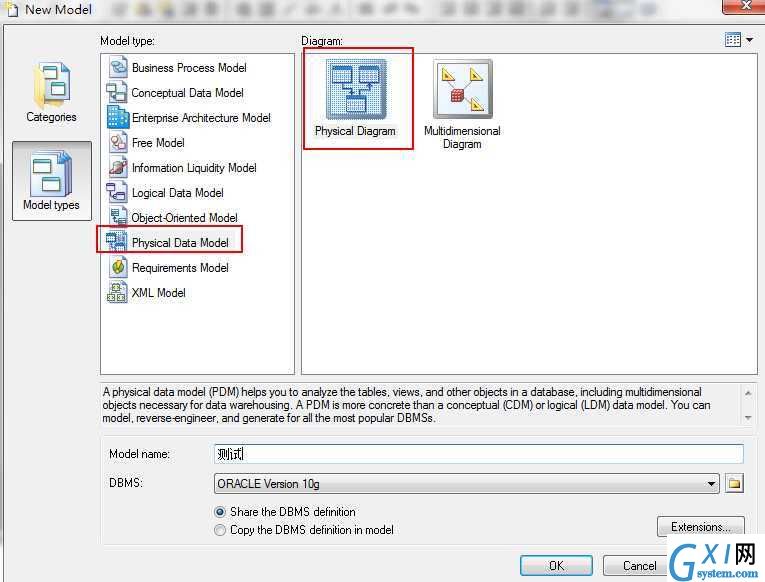
3、 选择Database下的Connect,DataSource选择ODBCmachine data source,下面选择我们第一部建立的数据源sql2008,
然后在login输入登录数据库的用户名和密码:
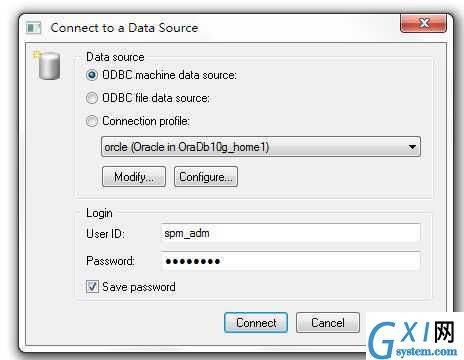
4、修改模型数据导入语句,选择General->Microsoft SQL Server 2005->Script->Objects->Table->SqlListQuery
其实就是编辑导入数据模型和数据库对表对应关系,原来的是设置不能导入表描述所以做了如下修改:

系统默认代码:
{OWNER,TABLE, TABLE_TYPE, COMMENT}
select
u.name,
o.name,
case (o.type) when ‘S‘ then ‘SYSTEM TABLE‘else ‘TABLE‘ end,
(select convert(varchar(8000), value) from::fn_listextendedproperty(NULL, ‘user‘, u.name, ‘table‘, o.name, null, null)where name = ‘MS_Description‘) as coln
from
[%CATALOG%.]sys.sysobjects o
join [%CATALOG%.]sys.schemas u on (u.schema_id = o.uid)
where
o.type in (‘U‘, ‘S‘)
[and u.name = %.q:OWNER%]
order by 1, 2
修改后的代码:
{OWNER,TABLE, TABLE_TYPE, COMMENT,TNAME}
select
u.name,
o.name,
case (o.type) when ‘S‘ then ‘SYSTEM TABLE‘else ‘TABLE‘ end,
(convert(varchar(8000),isnull(f.value,o.name)),
convert(varchar(8000),isnull(f.value,o.name))
from
[%CATALOG%.]sys.sysobjects o
join [%CATALOG%.]sys.schemas u on (u.schema_id = o.uid)
left join [%CATALOG%.]sys.extended_propertiesf on
f.major_id=o.id and f.minor_id=0 andf.class=1
where
o.type in (‘U‘, ‘S‘)
[and u.name = %.q:OWNER%]
order by 1, 2
5、修改模型字段导入语句,选择General->ORACLE10g->Script->Objects ->Column->SqlListQuery
其实就是编辑导入数据模型和数据库字段对应关系,原来的是设置不能导入字段描述所以做了如下修改:
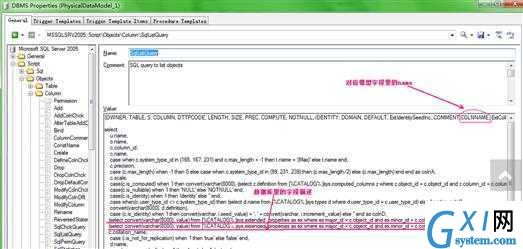
系统默认代码:
{OWNER,TABLE, S, COLUMN, DTTPcode, LENGTH, SIZE, preC, COMPUTE, NOTNULL, IDENTITY,DOMAIN, DEFAULT, ExtIdentitySeedInc, COMMENT, ExtCollation,ExtIdtNotForReplication, ExtDeftConstName, ExtRowGuidCol}
select
u.name,
o.name,
c.column_id,
c.name,
case when c.system_type_id in (165, 167,231) and c.max_length = -1 then t.name + ‘(Max)‘ else t.name end,
c.precision,
case (c.max_length) when -1 then 0 elsecase when c.system_type_id in (99, 231, 239) then (c.max_length/2) else(c.max_length) end end as colnA,
c.scale,
case(c.is_computed) when 1 thenconvert(varchar(8000), (select z.definition from[%CATALOG%.]sys.computed_columns z where z.object_id = c.object_id andz.column_id = c.column_id)) else ‘‘ end as colnB,
case(c.is_nullable) when 1 then ‘NULL‘ else‘NOTNULL‘ end,
case(c.is_identity) when 1 then ‘identity‘else ‘‘ end,
case when(c.user_type_id <>c.system_type_id) then (select d.name from [%CATALOG%.]sys.types d whered.user_type_id = c.user_type_id) else ‘‘ end as colnC,
convert(varchar(8000), d.definition),
case (c.is_identity) when 1 thenconvert(varchar, i.seed_value) + ‘, ‘ + convert(varchar, i.increment_value)else ‘‘ end as colnD,
(select convert(varchar(8000), value) from::fn_listextendedproperty(NULL, ‘user‘, u.name, ‘table‘, o.name, ‘column‘,c.name) where name = ‘MS_Description‘) as colnE,
c.collation_name,
case (i.is_not_for_replication) when 1 then‘true‘ else ‘false‘ end,
d.name,
case(c.is_rowguidcol) when 1 then ‘true‘else ‘false‘ end
from
[%CATALOG%.]sys.columns c
join [%CATALOG%.]sys.objects o on(o.object_id = c.object_id)
join [%CATALOG%.]sys.schemas u on(u.schema_id = o.schema_id)
join [%CATALOG%.]sys.types t on (t.user_type_id = c.system_type_id)
left outer join[%CATALOG%.]sys.identity_columns i on (i.object_id = c.object_id andi.column_id = c.column_id)
left outer join[%CATALOG%.]sys.default_constraints d on (d.object_id = c.default_object_id)
where
o.type in (‘U‘, ‘S‘, ‘V‘)
[and u.name = %.q:OWNER%]
[and o.name=%.q:TABLE%]
order by 1, 2, 3
修改后代码:
{OWNER,TABLE, S, COLUMN, DTTPcode, LENGTH, SIZE, preC, COMPUTE, NOTNULL, IDENTITY,DOMAIN, DEFAULT, ExtIdentitySeedInc, COMMENT,COLNNAME, ExtCollation,ExtIdtNotForReplication, ExtDeftConstName, ExtRowGuidCol}
select
u.name,
o.name,
c.column_id,
c.name,
case when c.system_type_id in (165, 167,231) and c.max_length = -1 then t.name + ‘(Max)‘ else t.name end,
c.precision,
case (c.max_length) when -1 then 0 elsecase when c.system_type_id in (99, 231, 239) then (c.max_length/2) else(c.max_length) end end as colnA,
c.scale,
case(c.is_computed) when 1 thenconvert(varchar(8000), (select z.definition from[%CATALOG%.]sys.computed_columns z where z.object_id = c.object_id andz.column_id = c.column_id)) else ‘‘ end as colnB,
case(c.is_nullable) when 1 then ‘NULL‘ else‘NOTNULL‘ end,
case(c.is_identity) when 1 then ‘identity‘else ‘‘ end,
case when(c.user_type_id <>c.system_type_id) then (select d.name from [%CATALOG%.]sys.types d whered.user_type_id = c.user_type_id) else ‘‘ end as colnC,
convert(varchar(8000), d.definition),
case (c.is_identity) when 1 thenconvert(varchar, i.seed_value) + ‘, ‘ + convert(varchar, i.increment_value)else ‘‘ end as colnD,
(select convert(varchar(8000), value) from[%CATALOG%.]sys.extended_properties as ex where ex.major_id = c.object_id andex.minor_id = c.column_id),
(select convert(varchar(8000), value) from[%CATALOG%.]sys.extended_properties as ex where ex.major_id = c.object_id andex.minor_id = c.column_id),
c.collation_name,
case (i.is_not_for_replication) when 1 then‘true‘ else ‘false‘ end,
d.name,
case(c.is_rowguidcol) when 1 then ‘true‘else ‘false‘ end
from
[%CATALOG%.]sys.columns c
join [%CATALOG%.]sys.objects o on(o.object_id = c.object_id)
join [%CATALOG%.]sys.schemas u on(u.schema_id = o.schema_id)
join [%CATALOG%.]sys.types t on (t.user_type_id = c.system_type_id)
left outer join[%CATALOG%.]sys.identity_columns i on (i.object_id = c.object_id andi.column_id = c.column_id)
left outer join[%CATALOG%.]sys.default_constraints d on (d.object_id = c.default_object_id)
where
o.type in (‘U‘, ‘S‘, ‘V‘)
[and u.name = %.q:OWNER%]
[and o.name=%.q:TABLE%]
order by 1, 2, 3
6、前面都是准备工作,现在开始生成模型吧:
a) 选择菜单Database->ReverseEngineer Database(ctrl+r):
b) 弹出的窗口中,选择选项卡Selection(默认就是这个窗口),选择Using a data source
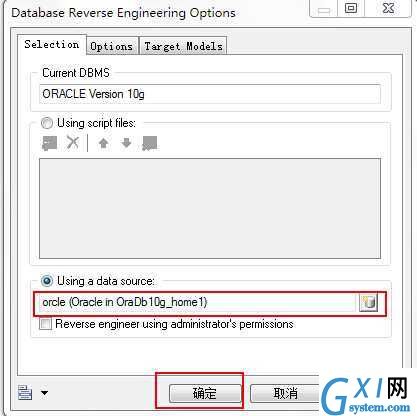
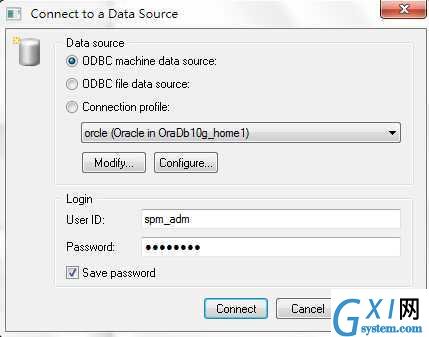
c) 然后点击确定,在弹出窗口选择需要导入数据库以及选择需要导入的表模型(这里可以不完全导入)

d)最后点击确认就生成了

